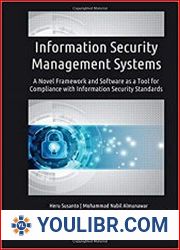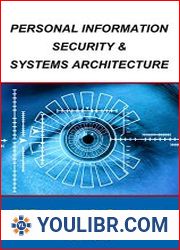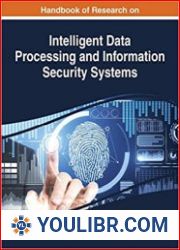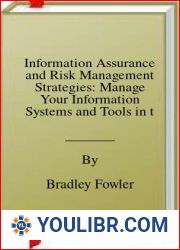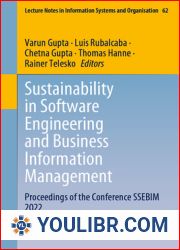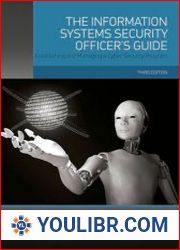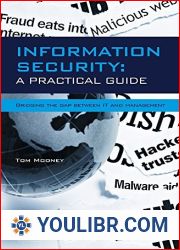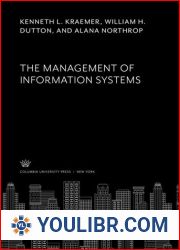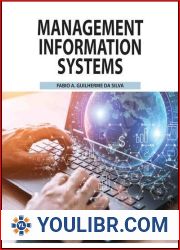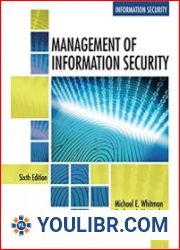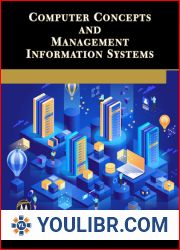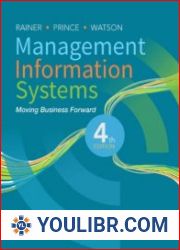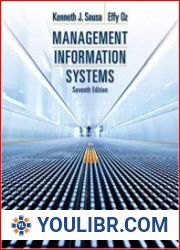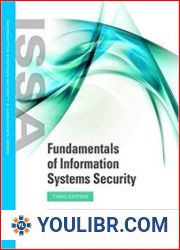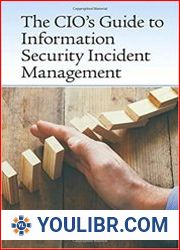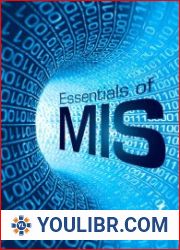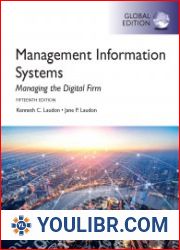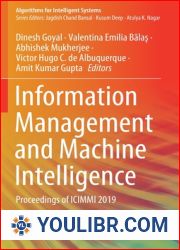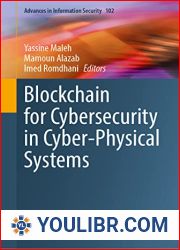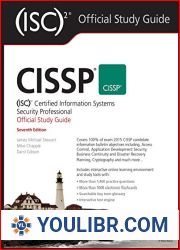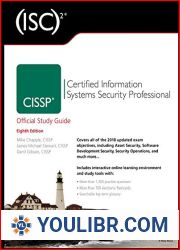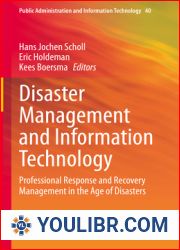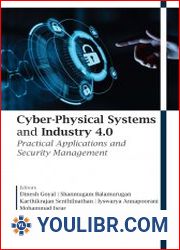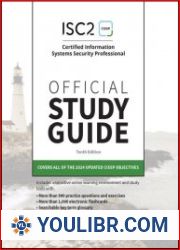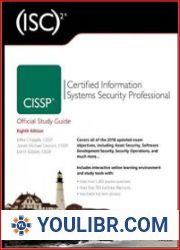
BOOKS - PROGRAMMING - Information Security Management Systems A Novel Framework and S...

Information Security Management Systems A Novel Framework and Software as a Tool for Compliance with Information Security Standard
Author: Heru Susanto
Year: 2018
Format: PDF
File size: 10 MB
Language: ENG
Year: 2018
Format: PDF
File size: 10 MB
Language: ENG
The book provides a comprehensive framework for understanding the development of information security management systems and how they can be used to ensure compliance with information security standards. It also discusses the importance of developing a personal paradigm for perceiving the technological process of developing modern knowledge as the basis for the survival of humanity and the survival of the unification of people in a warring state. The book begins by exploring the concept of information security management systems and how they have evolved over time. The authors explain how these systems have become increasingly important in today's digital age, where technology is constantly advancing and creating new vulnerabilities that must be addressed. They argue that organizations need to understand the risks associated with information security and take proactive steps to mitigate them in order to protect their assets and maintain trust with stakeholders. The authors then delve into the specifics of risk management, highlighting the key components of a risk management program and how they can be applied within an organization. They emphasize the importance of identifying potential threats and assessing their likelihood and impact on the organization. They also provide practical advice on how to prioritize risks based on severity and likelihood, and how to develop effective strategies for mitigating those risks. Next, the authors turn their attention to software tools that can be used to support compliance with information security standards. They discuss the various types of software available, including firewalls, intrusion detection systems, and encryption technologies, and provide examples of how each can be used to improve information security within an organization. They also emphasize the importance of selecting appropriate software tools based on the unique needs of the organization and its specific risk profile.
Книга предоставляет всеобъемлющую основу для понимания разработки систем управления информационной безопасностью и того, как их можно использовать для обеспечения соответствия стандартам информационной безопасности. Также обсуждается важность выработки личностной парадигмы восприятия технологического процесса развития современного знания как основы выживания человечества и выживания объединения людей в воюющем государстве. Книга начинается с изучения концепции систем управления информационной безопасностью и того, как они развивались с течением времени. Авторы объясняют, как эти системы становятся все более важными в современную цифровую эпоху, когда технологии постоянно развиваются и создают новые уязвимости, которые необходимо устранять. Они утверждают, что организации должны понимать риски, связанные с информационной безопасностью, и предпринимать упреждающие шаги по их снижению, чтобы защитить свои активы и сохранить доверие к заинтересованным сторонам. Затем авторы углубляются в особенности управления рисками, выделяя ключевые компоненты программы управления рисками и способы их применения внутри организации. Они подчеркивают важность выявления потенциальных угроз и оценки их вероятности и влияния на организацию. Они также предоставляют практические советы о том, как расставить приоритеты в рисках на основе серьезности и вероятности, и как разработать эффективные стратегии для снижения этих рисков. Далее авторы обращают внимание на программные средства, которые можно использовать для поддержки соответствия стандартам информационной безопасности. В них обсуждаются различные типы доступного программного обеспечения, включая брандмауэры, системы обнаружения вторжений и технологии шифрования, а также приводятся примеры того, как каждое из них можно использовать для повышения информационной безопасности в организации. Они также подчеркивают важность выбора соответствующих программных средств на основе уникальных потребностей организации и ее конкретного профиля риска.
gewährt das Buch die allumfassende Grundlage für das Verständnis der Entwicklung der Steuersysteme die informative cherheit und, wie man sie für die Versorgung der Übereinstimmung mit den Standards der informativen cherheit verwenden kann. Es wird auch diskutiert, wie wichtig es ist, ein persönliches Paradigma für die Wahrnehmung des technologischen Prozesses der Entwicklung des modernen Wissens als Grundlage für das Überleben der Menschheit und das Überleben der Vereinigung der Menschen in einem kriegführenden Staat zu entwickeln. Das Buch fängt mit dem Studium der Konzeption der Steuersysteme die informative cherheit und an, wie sie sich im Laufe der Zeit entwickelten. Die Autoren erklären, wie diese Systeme im heutigen digitalen Zeitalter, in dem sich die Technologie ständig weiterentwickelt und neue Schwachstellen schafft, die angegangen werden müssen, immer wichtiger werden. e argumentieren, dass Unternehmen die mit der Informationssicherheit verbundenen Risiken verstehen und proaktive Maßnahmen ergreifen sollten, um sie zu reduzieren, um ihre Vermögenswerte zu schützen und das Vertrauen der Interessengruppen zu erhalten. Die Autoren vertiefen sich dann in die Besonderheiten des Risikomanagements, indem sie die Schlüsselkomponenten des Risikomanagementprogramms und deren Anwendung innerhalb der Organisation hervorheben. e betonen, wie wichtig es ist, potenzielle Bedrohungen zu identifizieren und deren Wahrscheinlichkeit und Auswirkungen auf die Organisation zu bewerten. e bieten auch praktische Tipps, wie Risiken basierend auf Schweregrad und Wahrscheinlichkeit priorisiert werden können und wie wirksame Strategien zur Verringerung dieser Risiken entwickelt werden können. Als Nächstes achten die Autoren auf Softwaretools, mit denen die Einhaltung von Informationssicherheitsstandards unterstützt werden kann. e diskutieren die verschiedenen Arten von verfügbarer Software, einschließlich Firewalls, Intrusion Detection-Systemen und Verschlüsselungstechnologien, und geben Beispiele dafür, wie jede von ihnen verwendet werden kann, um die Informationssicherheit in einer Organisation zu verbessern. e betonen auch die Bedeutung der Auswahl geeigneter Softwaretools auf der Grundlage der individuellen Bedürfnisse der Organisation und ihres spezifischen Risikoprofils.
''
Kitap, bilgi güvenliği yönetim sistemlerinin gelişimini ve bilgi güvenliği standartlarına uyumu sağlamak için nasıl kullanılabileceğini anlamak için kapsamlı bir çerçeve sunmaktadır. Modern bilginin gelişiminin teknolojik sürecinin algılanması için kişisel bir paradigma geliştirmenin önemi, insanlığın hayatta kalması ve insanların savaşan bir durumda birleşmesinin hayatta kalması için temel olarak tartışılmaktadır. Kitap, bilgi güvenliği yönetim sistemleri kavramını ve zaman içinde nasıl geliştiklerini inceleyerek başlıyor. Yazarlar, bu sistemlerin, teknolojinin sürekli olarak geliştiği ve ele alınması gereken yeni güvenlik açıkları yarattığı günümüz dijital çağında nasıl giderek daha önemli hale geldiğini açıklıyor. Kuruluşların bilgi güvenliği ile ilgili riskleri anlamaları ve varlıklarını korumak ve paydaşlara güven duymak için bunları azaltmak için proaktif adımlar atmaları gerektiğini savunuyorlar. Daha sonra yazarlar, risk yönetimi programının temel bileşenlerini ve kuruluş içinde nasıl uygulandıklarını vurgulayarak risk yönetiminin özelliklerini araştırırlar. Potansiyel tehditleri tanımlamanın ve bunların organizasyon üzerindeki olasılığını ve etkisini değerlendirmenin önemini vurgularlar. Ayrıca, ciddiyet ve olasılığa dayalı risklerin nasıl önceliklendirileceği ve bu riskleri azaltmak için etkili stratejilerin nasıl geliştirileceği konusunda pratik önerilerde bulunurlar. Ayrıca, yazarlar bilgi güvenliği standartlarına uyumu desteklemek için kullanılabilecek yazılım araçlarına dikkat etmektedir. Güvenlik duvarları, izinsiz giriş tespit sistemleri ve şifreleme teknolojileri de dahil olmak üzere mevcut farklı yazılım türlerini tartışırlar ve her birinin bir organizasyonda bilgi güvenliğini artırmak için nasıl kullanılabileceğine dair örnekler sunarlar. Ayrıca, kuruluşun benzersiz ihtiyaçlarına ve özel risk profiline dayanarak uygun yazılım araçlarının seçilmesinin önemini vurgulamaktadır.
يوفر الكتاب إطارا شاملا لفهم تطوير نظم إدارة أمن المعلومات وكيفية استخدامها لضمان الامتثال لمعايير أمن المعلومات. كما نوقشت أهمية وضع نموذج شخصي لتصور العملية التكنولوجية لتطور المعرفة الحديثة كأساس لبقاء البشرية وبقاء توحيد الناس في دولة متحاربة. يبدأ الكتاب بدراسة مفهوم أنظمة إدارة أمن المعلومات وكيف تطورت بمرور الوقت. يشرح المؤلفون كيف أصبحت هذه الأنظمة ذات أهمية متزايدة في العصر الرقمي اليوم، حيث تتطور التكنولوجيا باستمرار وتخلق نقاط ضعف جديدة تحتاج إلى معالجة. وهم يجادلون بأنه يجب على المنظمات أن تفهم المخاطر المرتبطة بأمن المعلومات وأن تتخذ خطوات استباقية للتخفيف من حدتها من أجل حماية أصولها والحفاظ على الثقة في أصحاب المصلحة. ثم يتعمق المؤلفون في تفاصيل إدارة المخاطر، ويسلطون الضوء على المكونات الرئيسية لبرنامج إدارة المخاطر وكيفية تطبيقها داخل المنظمة. وهي تشدد على أهمية تحديد التهديدات المحتملة وتقييم احتمالات وقوعها وتأثيرها على المنظمة. كما أنها تقدم المشورة العملية بشأن كيفية تحديد أولويات المخاطر على أساس الشدة والاحتمالات، وكيفية وضع استراتيجيات فعالة للتخفيف من تلك المخاطر. علاوة على ذلك، يولي المؤلفون اهتمامًا لأدوات البرمجيات التي يمكن استخدامها لدعم الامتثال لمعايير أمن المعلومات. يناقشون الأنواع المختلفة من البرامج المتاحة، بما في ذلك جدران الحماية وأنظمة الكشف عن التسلل وتقنيات التشفير، ويقدمون أمثلة على كيفية استخدام كل منها لتحسين أمن المعلومات في المنظمة. كما يشددون على أهمية اختيار أدوات البرامجيات المناسبة استنادا إلى الاحتياجات الفريدة للمنظمة وموجز بيانات المخاطر الخاصة بها.







